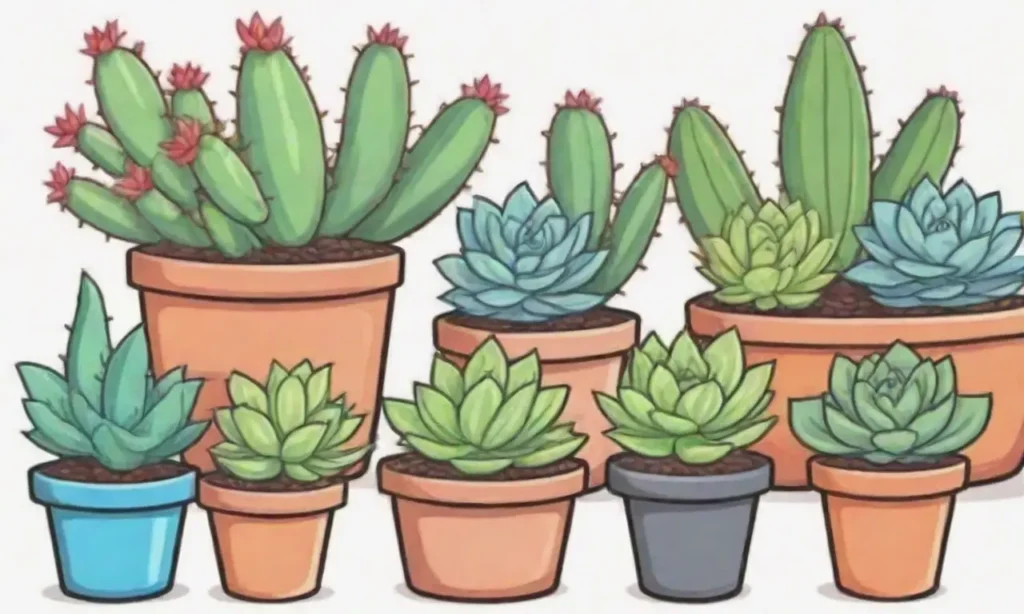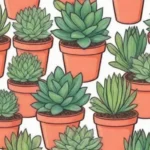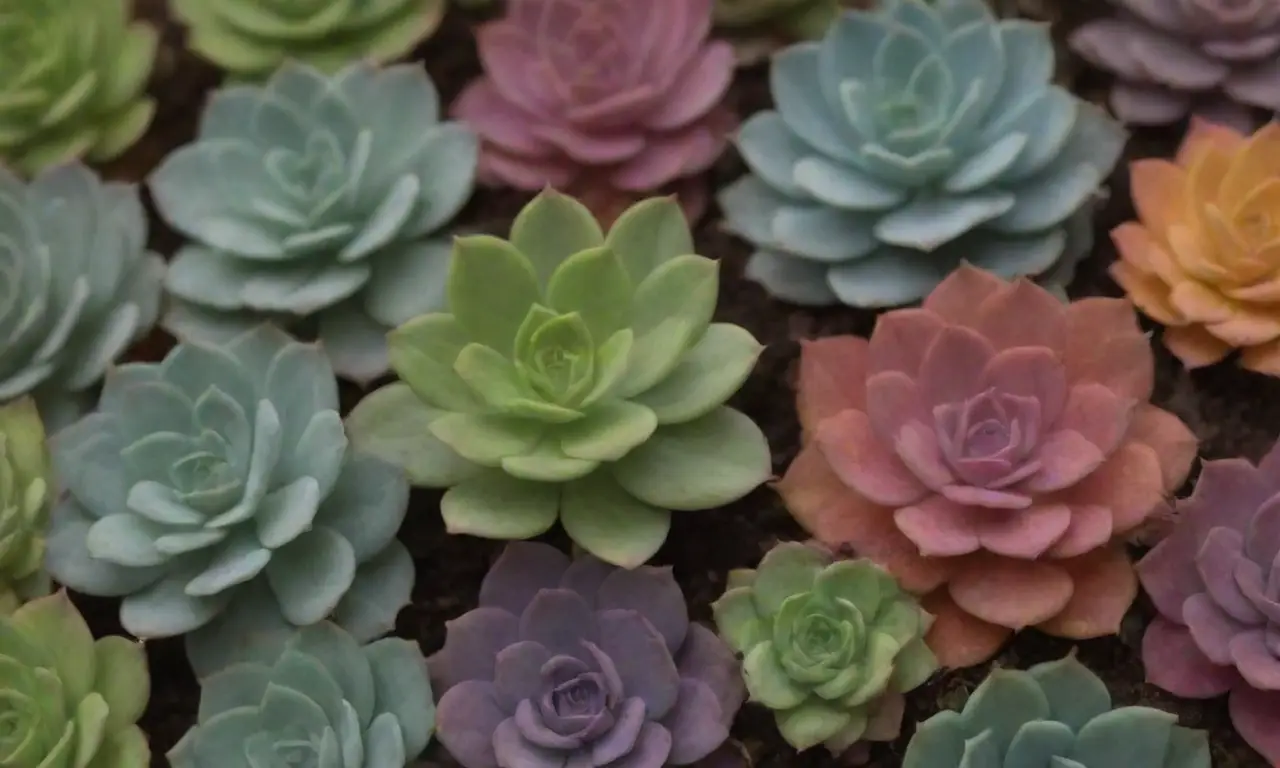Understanding Leaf Drop: Indicators of Succulent Plant Health

Introduction
Succulent plants have gained immense popularity among gardening enthusiasts and homeowners alike due to their diverse forms, striking aesthetics, and hardy nature. These plants are particularly valued for their ability to thrive in arid conditions, which makes them relatively low-maintenance. However, even the most resilient succulents can experience leaf drop, a phenomenon that may signal underlying issues affecting their health. Understanding the causes and implications of leaf drop can help succulent owners devise appropriate care strategies and maintain the vigor of their beloved plants.
In this article, we will explore the various reasons for leaf drop in succulent plants, ranging from environmental factors to pests and diseases. Additionally, we will provide practical tips on how to diagnose these issues and implement effective solutions to foster robust growth and resilience in your succulents. By gaining insights into the indicators of succulent plant health and learning to recognize the signs of distress, you can ensure that your green companions not only survive but thrive.
Understanding Leaf Drop Phenomenon
Leaf drop in succulents, often referred to as leaf abscission, is a natural process wherein the plant sheds its leaves. While it may occur as a part of the plant's life cycle, excessive or premature leaf drop is often a sign of stress or poor health. There are multiple factors that can trigger this response, including environmental stressors, pests, and various pathogens.
One of the most common environmental stressors leading to leaf drop is improper watering practices. Succulents require well-draining soil and a specific watering schedule that adheres to their unique needs. Overwatering can create a scenario where the roots are suffocated, leading to root rot—a condition that can cause not only leaf drop but also overall plant decline. Conversely, underwatering can lead to dehydration, resulting in shriveled leaves that eventually detach from the stem. Understanding your succulent's moisture requirements is crucial to preventing stress-induced leaf drop.
Another environmental factor contributing to leaf drop is light exposure. Succulents thrive in bright, indirect sunlight, and insufficient light can cause the leaves to stretch and weaken, making them more susceptible to dropping. Conversely, too much direct sunlight can lead to sunburn, which manifests as yellowing or browning leaves that may drop prematurely. This balancing act of light exposure is vital, and understanding the needs of your specific succulent species can be instrumental in maintaining their health.
Common Causes of Leaf Drop in Succulents
Overwatering and Root Rot
As previously mentioned, overwatering is a leading cause of leaf drop among succulent plants. Succulents are uniquely adapted to store moisture in their leaves, stems, and roots, allowing them to thrive in arid environments. However, excessive moisture can lead to root rot, a serious condition that can devastate your plant. When roots begin to rot, they lose their ability to absorb water and nutrients, leading to weakened leaves that are more likely to drop.
To determine if your succulent is suffering from root rot, inspect the plant's roots. Healthy roots should appear firm and white, while rotting roots will be dark brown, slimy, and emit a foul odor. If you discover rot, it's critical to act quickly. Remove the plant from its pot, trim away the affected roots, and allow the plant to dry out for a few hours before repotting it in fresh, well-draining soil. Adjust your watering schedule to allow the soil to dry completely between waterings, preventing a recurrence of this detrimental condition.
 Do’s and Don’ts of Spotting Healthy Leaves on Succulents
Do’s and Don’ts of Spotting Healthy Leaves on SucculentsUnderwatering and Dehydration
On the other end of the spectrum, underwatering remains a persistent threat to succulent health. While succulents do possess water-storing capabilities, they still require regular hydration to maintain optimal health. Underwatering results in dehydrated plants, leading to shriveling leaves that are prone to dropping. Signs of underwatering include a general decrease in leaf turgidity and wilting, along with a drooping appearance.
To revive a dehydrated succulent, ensure you're watering it adequately. Soak the soil thoroughly until water drains from the bottom of the pot but refrain from letting the plant sit in excess water, which could rekindle the risk of root rot. It's also beneficial to establish a watering routine that aligns with seasonal changes; during the growing season (spring and summer), succulents may require more frequent watering compared to the dormant months (fall and winter).
Light Quality and Duration
Light quality and duration are essential for the overall vigor and well-being of succulents. Insufficient light can weaken a plant's structure, causing it to stretch (a phenomenon called etiolation), resulting in thin, unsupported leaves that may be more inclined to fall off. Alternatively, susculents exposed to intense, direct sunlight may suffer from scorching and leaf burn, leading to discoloration and eventual leaf drop.
To prevent light-related leaf drop, it's essential to understand the light requirements of your specific succulent species. Placing your plants in locations that provide bright, indirect sunlight can promote healthy growth. Moreover, supplementing natural light with grow lights can be an effective solution for indoor succulent enthusiasts, especially during short winter days when natural sunlight is limited. By mimicking their natural habitat, you ensure that your succulents receive the light necessary to thrive.
Addressing Pest and Disease Issues

Identifying Pests
Beyond environmental factors, pests can wreak havoc on your succulent plants, leading to leaf drop and other health concerns. Common pests associated with succulents include mealybugs, aphids, and spider mites. These pests feed on the plant's sap, weakening its overall structure and health. Affected plants may exhibit leaf discoloration, stunted growth, or wilting, and the presence of a sticky residue known as honeydew can indicate pest activity.
Regularly inspecting your succulents for signs of pest infestations is vital. If you notice any pests, act quickly to contain the issue. Wiping the affected areas with a cotton ball dipped in isopropyl alcohol can help eliminate pests effectively. Additionally, introducing natural predators like ladybugs can assist with pest control in a more organic manner.
Recognizing Diseases
Plant diseases, particularly fungal infections, can also lead to leaf drop in succulents. Fungal diseases often manifest due to poor air circulation, high humidity levels, and excessive moisture—conditions that can breed pathogens. Symptoms may include circular spots, wilting, or a fuzzy appearance on the leaves. Proper diagnosis is essential for effective treatment.
Once diagnosed, it’s critical to remove any affected leaves and improve air circulation around the plant. Reducing humidity levels and allowing the soil to dry sufficiently between waterings can also mitigate the risk of disease. In severe cases, applying fungicides may be necessary to combat persistent fungal issues.
Implementing a Care Routine
Creating a robust care routine is invaluable in preventing leaf drop caused by pests and diseases. Ensure your succulents are planted in sterilized soil and containers to minimize the risk of introducing pathogens. Providing adequate space between your plants allows for airflow, which further helps in deterring pests and diseases. Monitoring your plants frequently for any changes can help you spot problems early, enabling timely interventions to restore health.
Conclusion
Leaf drop in succulents can be a common occurrence, but recognizing it as a sign of stress is crucial for plant health. Whether due to overwatering, underwatering, lighting issues, pests, or diseases, understanding the root causes of leaf drop allows succulent owners to develop tailored care strategies. By implementing effective watering practices, creating a suitable environment, and actively monitoring for pests and diseases, you can foster healthier and more resilient succulents.
In conclusion, keeping a watchful eye on your succulents and being proactive in your care approach will pay off in the long run. With a little knowledge and determination, you can ensure that your succulent plants continue to thrive, providing beauty and joy for years to come. Remember, the journey of maintaining succulent health is both an art and a science, and every succulent gardener can enhance their skills through diligent observation and care. Embrace the challenge, and enjoy the satisfaction of nurturing these unique and vibrant plants!
If you want to read more articles similar to Understanding Leaf Drop: Indicators of Succulent Plant Health, you can visit the Identifying healthy leaves category.
